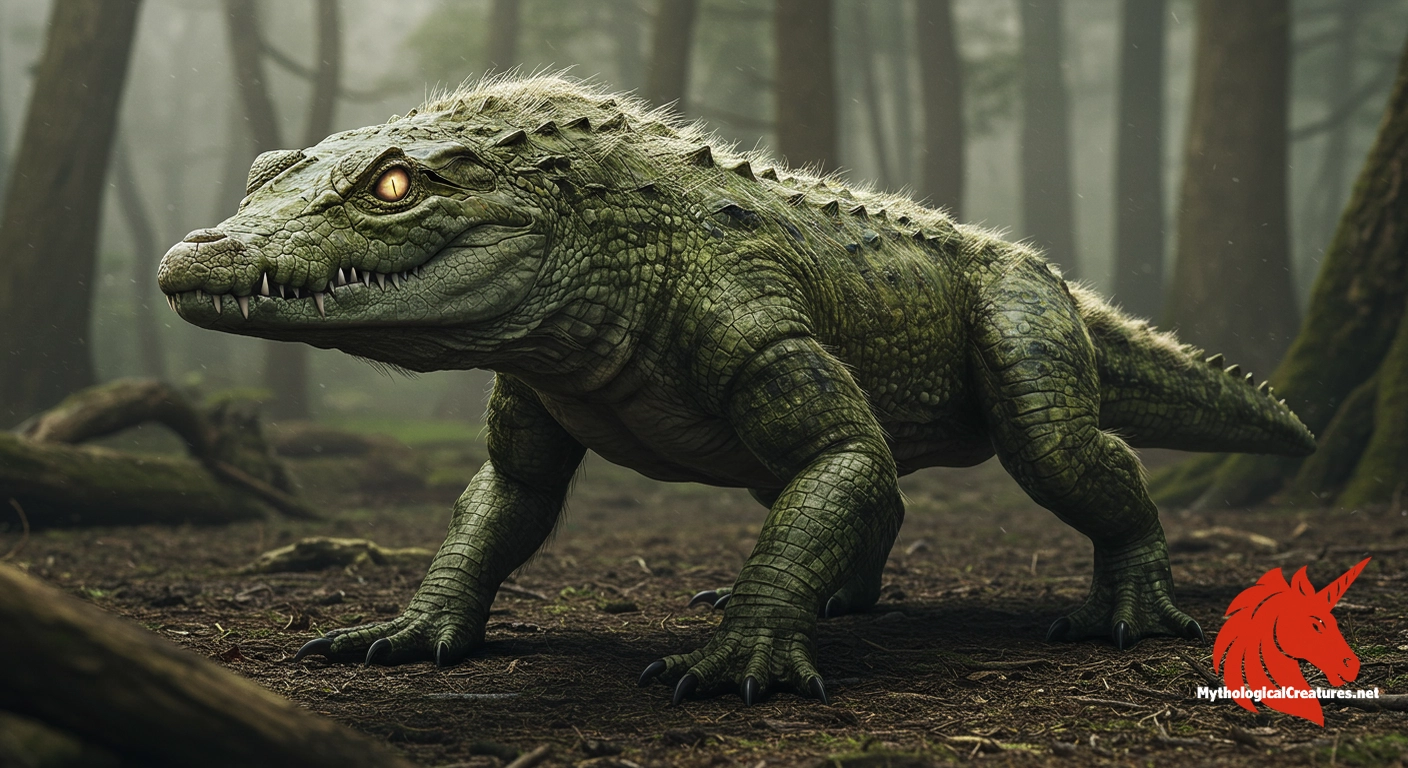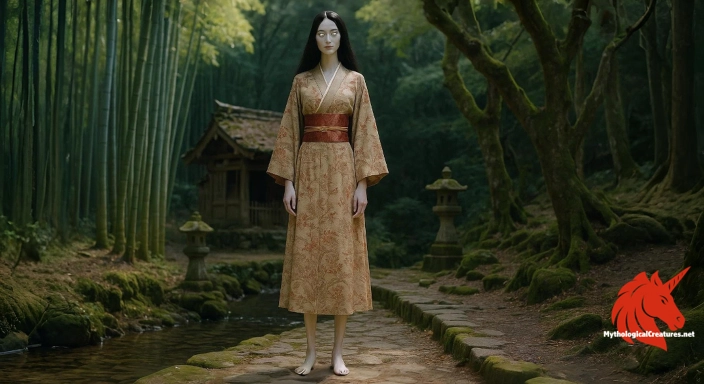Afanc: The Afanc is a legendary lake monster from Welsh mythology known for its variable and enigmatic appearance.

Afanc
Afanc - The Afanc is a significant figure in Welsh mythology, embodying the mysterious and perilous nature of untamed waters.
Origins & First Encounters
The Afanc emerges as a striking figure in Welsh mythology, a creature whose legend stretches back to early Celtic traditions and continues to captivate the modern imagination. Born from a rich tapestry of oral lore, this lake monster occupies a liminal space between the natural and the supernatural. Its origins are rooted in communities that once sought to explain the mysterious dangers lurking within pristine Welsh lakes. Tales of the Afanc have surfaced in ancient narratives passed down through generations, each retelling adding layers to its enigmatic character. The creature has been variously portrayed as both a menacing figure and a symbol of nature’s unpredictable force. Its ambiguous identity reflects a time when the boundaries between myth and reality were fluid and every shadow held potential wonder or terror. Across the Welsh landscape, the narrative of the Afanc has been adapted to mirror the fears and hopes of local communities facing the unknown. The enduring myth serves as both a reminder of nature’s untamed power and an invitation to explore the deep cultural roots of Welsh folklore. The story of the Afanc, with its blend of awe and apprehension, continues to stimulate scholarly inquiry and popular interest alike. Its persistent presence in cultural memory highlights the timeless interplay between humanity and the wild, inexplicable world around us.
Source Texts & Tale Variants
The earliest records of the Afanc are found in medieval manuscripts and local oral traditions that have been carefully preserved over centuries. Diverse folklore sources have recorded encounters with this mysterious lake dweller in narratives that often blend elements of myth and warning. Multiple versions of the tale exist, with some stories recounting heroic struggles against the creature while others focus on its more demonic attributes. Certain ballads present the Afanc as a cursed inhabitant of isolated lakes, suggesting that its presence was an omen of misfortune. Variations in the creature’s name, including the alternative title Addanc, further enrich the myth’s complex identity. In some accounts, the monster appears as an almost allegorical embodiment of nature’s hidden terrors, while in others it plays a more central role in community rituals and local lore. The multiplicity of sources testifies to the dynamic tradition of storytelling in Wales, where oral and written records intertwine to form a vibrant mythic narrative. Each variant of the Afanc legend reflects the shifting social and environmental concerns of its time. The enduring nature of the myth is evident in how each generation reshapes its tale, ensuring that the creature remains ever mysterious and compelling. These diverse accounts help to underscore the deep cultural resonance of the Afanc within Welsh folklore.
Form & Powers
Descriptions of the Afanc’s form are as varied as the landscapes in which it is said to dwell, making its physical appearance a subject of both fascination and debate. Some traditions depict the creature as possessing a sinuous, scaled body reminiscent of a crocodile, well adapted to the watery depths it inhabits. In other retellings, it takes on characteristics akin to a robust beaver, complete with webbed appendages and a powerful tail suited for swimming. Alternative narratives shift the focus to a more diminutive, dwarf-like entity that exudes a cunning intelligence and mysterious aura. There are even accounts that compare the Afanc to a platypus, suggesting it embodies an unlikely fusion of disparate animal traits. These physical portrayals, though divergent, share common elements of both the natural and the supernatural, blending familiar features with an otherworldly twist. Artists and storytellers over the centuries have embraced these contradictions, creating depictions that range from the starkly monstrous to the intriguingly ambiguous. Its ever-changing physical description mirrors the mutable essence of folklore, where each detail is subject to reinterpretation. This inherent ambiguity in its anatomy invites speculation and reimagining, ensuring that the Afanc remains a captivating enigma in myth. The layered and multifaceted physical imagery of the Afanc continues to inspire both awe and curiosity among those who encounter its legend.
Regional Faces
Across the varied terrains of Wales, the legend of the Afanc has picked up unique local hues that mirror the distinct characteristics of each region’s landscape. In some parts of Wales, the creature is firmly anchored to specific lakes, such as the famed Llyn yr Afanc near Betws-y-coed, where its presence is a vital part of regional identity. Elsewhere, communities recount sightings near Llyn Llion or Llyn Barfog, infusing local water bodies with an aura of ancient mystery and latent power. Such regional adaptations often influence the creature’s description, with rural areas favouring a more bestial and foreboding depiction, while other traditions imbue it with an almost supernatural charm. The varied local narratives are reflective of different environmental challenges and cultural mindsets, with each community using the myth to articulate encounters with nature’s unpredictable force. Storytellers have adapted the Afanc’s character to fit local lore, sometimes casting it as a guardian of the natural order, and at other times as a harbinger of chaotic disruption. These regional variations highlight the dynamic interplay between geography and myth, underscoring how natural features can inspire both reverence and trepidation. As local legends evolve, they continue to inject new life into the Afanc’s mythos, ensuring the story remains relevant to each distinct community. The regional flavours of the tale enhance its richness and attest to the deep-seated bond between the creature and the Welsh landscape. This diversity in portrayal serves to reinforce the idea that the magic of myth thrives in the details of local tradition.
Cultural Parallels
Comparative analysis reveals that the Afanc shares notable similarities with other aquatic creatures in global mythology, resonating with themes of mystery and transformation. Like the celebrated Loch Ness Monster of Scotland, the Afanc is enveloped in an aura of ambiguity that straddles the border between legend and reality. Its amalgamation of reptilian traits with more mammalian features recalls the broader Celtic penchant for crafting hybrid beings that challenge conventional classifications. Similar to water spirits and shape-shifters in neighbouring Irish and Scandinavian lore, the Afanc serves as a symbolic representation of nature’s dual aspects—both nurturing and destructive. The creature’s multifaceted character finds echoes in legends that portray water as a repository of both life and danger, emphasising a timeless narrative shared across cultures. Across Europe, beings that inhabit liminal aquatic spaces often embody the tension between order and chaos, a motif that the Afanc encapsulates with its shifting visage. Its depiction blurs the lines between animal, demon, and nature spirit, a quality that aligns it with other mythic entities celebrated for their enigmatic power. The interwoven themes of transformation and elemental force affirm the universal appeal of such legends, permitting cross-cultural interpretations. By bridging attributes found in both the fantastical and the natural world, the Afanc stands as a testament to the pervasive human fascination with creatures that defy categorisation. Its presence in the mythic landscape invites ongoing comparison with a host of similarly mysterious entities, enriching our understanding of folklore’s universality.
Legacy & Modern Evolution
The legacy of the Afanc has evolved remarkably over time, transitioning from a singular emblem of dread to a more complex symbol of natural mystery and cultural heritage. Early depictions focused on its terrifying presence and its role as a portent of misfortune, a representation of the unpredictable forces concealed in the depths of ancient lakes. In modern retellings, however, the creature has been reimagined as a multifaceted figure, embodying both the beauty and the peril inherent in nature. Contemporary artistic and literary works have embraced and expanded upon these themes, depicting the Afanc in a variety of transformative roles that range from guardian to misunderstood antihero. Current popular culture, especially within the realms of fantasy literature and cryptozoology, often portrays the creature with an alluring ambiguity that invites both intrigue and empathy. This shift mirrors a broader trend in which ancient myths are adapted to address modern environmental and social concerns. Community festivals, local art installations, and tourism initiatives in Wales have further cemented the Afanc’s status as an enduring cultural icon. Its evolution in public consciousness speaks to the power of myth to continually reframe our understanding of nature and the mysteries that lie beneath its surface. As new generations discover and reinterpret the tale, the Afanc remains a dynamic emblem of both ancient myth and contemporary creative expression. This persistent relevance highlights the transformative journey from fear to fascination, ensuring that the spirit of the Afanc thrives in the modern era.
Interesting Fact
One fascinating aspect of the Afanc is its remarkably diverse portrayal, which may reflect regional variations in Welsh folklore or a deliberate mythological ambiguity that allows it to embody multiple natural and supernatural traits.
Quick Creature Info
Features:
Associations:
Our Mythic Legendary Rating:

Also Sometimes Known As:
Habitat:
Physical Attributes:
Behavior:
Lore:
Related Creatures, Tales or Lore
References
Discover Another Mythical Legend You May Not Have Heard Of?
Uncover the mysteries of ancient folklore and expand your knowledge of legendary beings from cultures around the world.
Dare to Meet the Takaonna....
Curated by the Mythological Creatures Team (rev. May 2025)
